Quantitative Real-time PCR (qPCR) is a method that introduces fluorescent groups into the PCR amplification system, realizes dynamic detection of target nucleic acids by real-time monitoring of the changes in fluorescence signals in each amplification cycle, and finally uses standard curves to perform quantitative analysis on unknown samples.
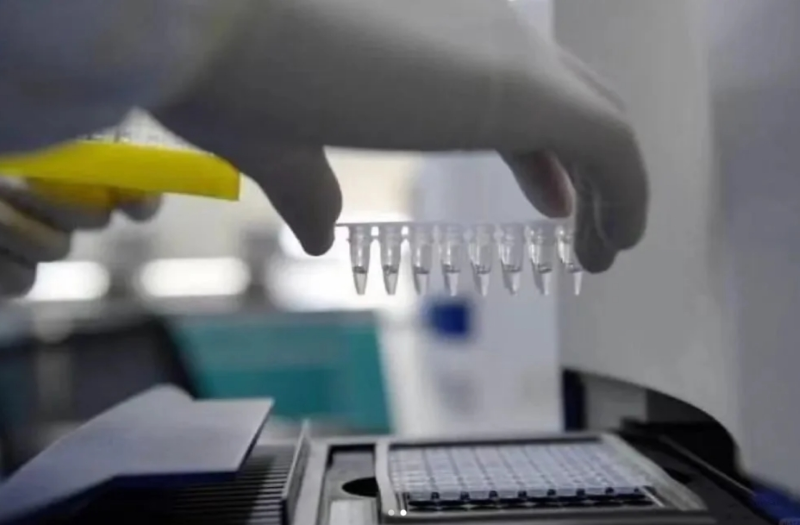
qPCR consumables are crucial in experiments, and their classification and selection directly affect the accuracy and reliability of experimental results. The experiment involves a variety of PCR consumables, such as PCR plates, PCR tubes, sealing films, pipette tips, etc. The choice of different materials and specifications will also affect the experimental results.
In response to everyone's concerns, such as why are PCR consumables made of PP? What are the common volume specifications? This time we will analyze the consumables required for PCR experiments in detail, hoping to provide valuable reference and guidance for experimenters.
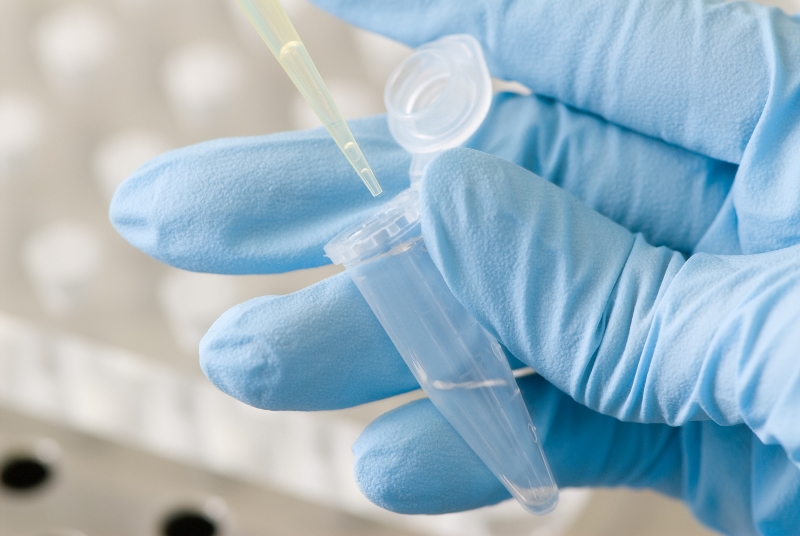
Common PCR consumables and their characteristics
In PCR experiments, choosing the right consumables is crucial to ensure the accuracy and repeatability of the experiment. The following are common PCR consumables and their uses:
PCR tubes (EP tubes), 8-strip tubes
Use: Used to hold PCR reaction systems, suitable for low-throughput PCR experiments.
Features: Disposable, with good sealing and high temperature resistance, can withstand temperature changes in PCR cycles.
Common specifications: 0.2mL: Suitable for most PCR reactions, common in ordinary PCR and fluorescent quantitative PCR (qPCR).
0.5mL: Suitable for specific PCR reactions, with a larger volume but less use.
8-strip tubes: Used to improve experimental efficiency, suitable for batch sample processing, and reduce operational errors.
96-well/384-well PCR plates, deep-well plates
Use: Used for high-throughput PCR and qPCR experiments, multiple samples can be processed at the same time to improve experimental efficiency.
Features: Adapt to different types of PCR instruments, and choose the appropriate plate type (no skirt, half skirt, full skirt).
Need to match with sealing film or sealing cover to prevent evaporation contamination.
Some PCR plates (such as white PCR plates) are suitable for qPCR, which can improve the detection sensitivity of fluorescent signals.
Common specifications: 96-well PCR plate: commonly used in standard throughput experiments, 96 samples can be processed at a time.
384-well PCR plate: used for ultra-high throughput experiments, such as gene expression analysis or genotyping.
Deep well plate (1.2mL/2.2mL): used for sample storage, dilution or high-throughput experiments, often used with automated equipment.
Pipette tip
Use: Use the pipette to accurately transfer and dispense liquids to ensure accurate transfer of samples, reagents and other solutions to avoid cross contamination.
Features: With low adsorption or filter design, suitable for qPCR or RNA experiments to prevent aerosol contamination.
Provide a variety of specifications (10μL, 200μL, 1000μL, etc.) to meet different volume pipetting needs.
Compatible with manual pipettes and automated pipetting workstations to improve experimental efficiency.
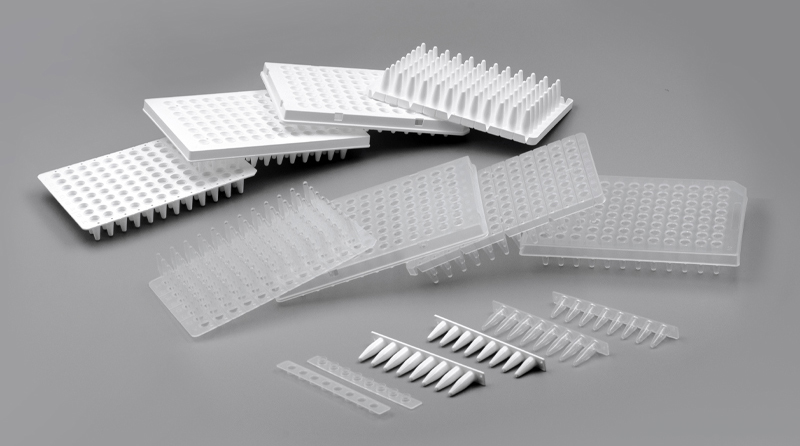
PCR/qPCR consumables are usually in direct contact with reagents and samples, so their material selection and production environment are crucial to the accuracy of the experiment.
Why are PCR consumables generally made of PP (polypropylene)?
Polypropylene (PP) is a biologically inert material with the following advantages, making it the first choice for PCR consumables:
Low adsorption: DNA, RNA and protein are not easily adhered to the surface, reducing sample loss and ensuring experimental accuracy.
Chemical resistance: It has good tolerance to PCR reagents (such as buffers and enzymes) and will not react with them.
High temperature resistance: It can withstand temperature changes during PCR cycles and can withstand high-pressure sterilization at 121°C without deformation or release of harmful substances.
Flexibility: It is easy to seal and suitable for automated experimental operations.
Why do PCR consumables require a clean environment?
PCR experiments are extremely sensitive to contamination, so consumables must be free of contamination, inhibitors, and DNA residues, otherwise it may lead to experimental failure or result deviation.
Avoid exogenous contamination: If PCR consumables are exposed to ordinary environments during production, dust, DNA residues, and protein contamination in the air may adhere to the surface of the consumables and affect the experiment.
Prevent PCR inhibitor residues: Some chemicals may inhibit the activity of Taq DNA polymerase, resulting in decreased amplification efficiency or amplification failure.
Reduce fluorescence signal interference: Contaminants (such as trace organic matter and particles) may absorb fluorescence in the reaction system, affect fluorescence signal collection, and reduce the reliability of qPCR data.
Limitations of autoclaving and radiation sterilization: Although autoclaving or gamma ray irradiation can remove bacteria and nucleases, it cannot remove dust and DNA residues, so the entire production process must be completed in a clean environment.
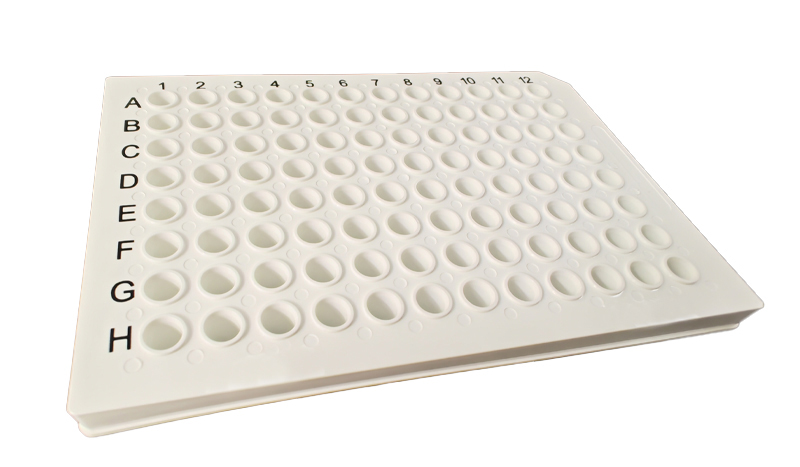
Production standards for PCR consumables
To ensure high precision and high repeatability of PCR experiments, PCR consumables are usually produced in sterile clean workshops and meet the following standards:
No DNase, RNase, DNA contamination
No PCR inhibitors
Low adsorption, low autofluorescence (suitable for qPCR experiments)
High temperature sterilization or gamma ray treatment to ensure no microbial contamination
Optimize heat transfer and improve qPCR experimental accuracy: the key choice of PCR consumables
Ultra-thin wall thickness optimizes heat transfer and improves PCR efficiency
The wall thickness of the PCR tube directly affects the thermal conductivity, which in turn affects the efficiency and cycle time of the PCR amplification reaction. The extremely thin and uniform tube wall can:
Optimize heat transfer, so that the sample can quickly reach the set temperature and improve the amplification efficiency.
Reduce the cycle time, speed up the reaction process, and increase the experimental throughput.
Ensure the consistency of amplification, ensure the temperature uniformity of samples in different wells, and reduce experimental errors.
Therefore, to improve the stability and efficiency of the PCR reaction, it is key to choose uniform and ultra-thin-walled PCR consumables.
qPCR recommends the use of high-quality white PCR consumables
Ordinary PCR: Transparent or colored PCR tubes can be used, and colored PCR tubes can also facilitate sample classification and management.
qPCR: It is recommended to use high-quality white PCR consumables, the main advantages include:
Maximum reflection of fluorescent signals, improve fluorescence recovery rate, and enhance signal intensity.
Reduce cross-contamination of signals between wells, reduce background noise, and improve quantitative accuracy.
Optimize the sensitivity and accuracy of qPCR data to ensure the reliability of experimental results.
Experimental data show that compared with traditional transparent PCR tubes, white PCR tubes can significantly improve the efficiency of fluorescence signal detection and are an ideal choice for qPCR experiments.
Choose a high-transmittance tube cap to improve the accuracy of fluorescence signal collection
qPCR experiments rely on the accurate collection of fluorescence signals, so the transmittance of the tube cap is crucial.
High-transmittance tube caps ensure that the fluorescence signal is transmitted to the detection system without attenuation, improving the sensitivity and stability of fluorescence detection.
Low-quality tube caps may cause fluorescence signal attenuation or uneven transmission, affecting the accuracy of experimental data.
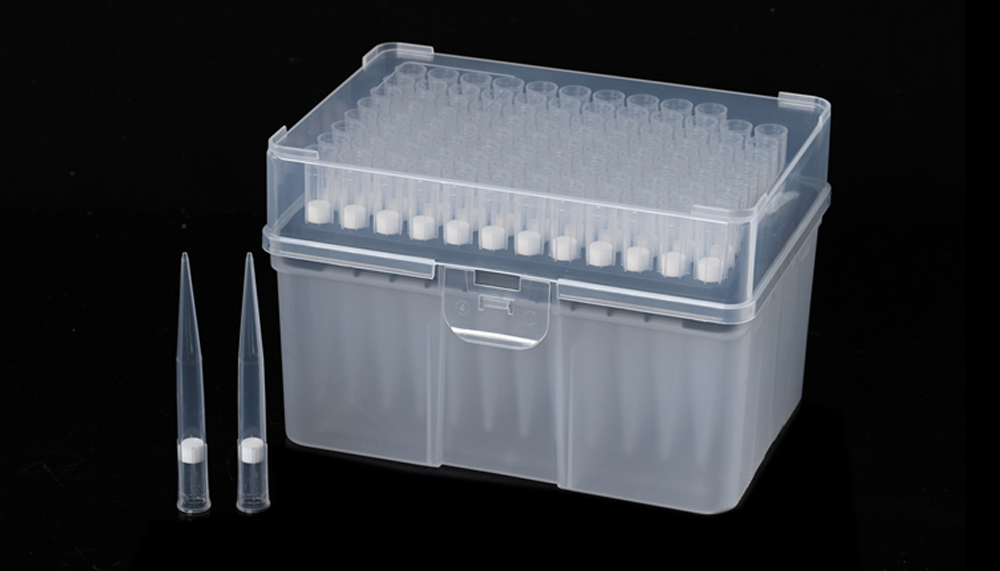
Common PCR reaction tube specifications and selection guide
PCR reaction tube specifications and volumes
In PCR experiments, reaction tube specifications vary, and common volumes are as follows:
Single tube/8-tube strip/12-tube strip: 0.5mL, 0.2mL, 0.15mL, 0.1mL
96-well PCR plate: 0.2mL, 0.15mL, 0.1mL
384-well PCR plate: 0.04mL
Why do PCR/qPCR plates have skirt designs?
The skirt design of PCR plates is mainly to adapt to different experimental needs, especially automated applications. Skirts can provide better stability and mechanical resistance, and can also improve operational stability during pipetting.
Non-skirted
Suitable for manual experiments, with strong versatility and compatible with PCR instruments of different brands.
Suitable for low-throughput experiments, easy to cut and use.
Semi-skirted
Suitable for partially automated systems, providing a certain degree of mechanical stability.
Can be used for labeling and easy sample management.
Full-skirted
Suitable for fully automated workstations, providing the best stability and support.
Can better adapt to pipetting workstations and improve experimental repeatability and accuracy.

How to choose a suitable PCR plate?
According to different experimental needs, you can choose a suitable PCR plate:
Manual experiment: non-skirt PCR plate, suitable for conventional PCR/qPCR.
Semi-automatic experiment: semi-skirt PCR plate, suitable for partially automated systems, with both stability and flexibility.
Fully automated experiment: full-skirt PCR plate, to ensure accurate pipetting and improve experimental stability.
For more detailed parameters and selection recommendations of PCR plates, you can refer to
https://www.welsotech.com/blog/show-158.html
This article provides professional guidance.
In PCR experiments, it is very important to choose high-quality sealing films, which can not only effectively protect samples and prevent contamination, but also improve the reliability of experimental data. Different experimental requirements should match different types of sealing films to ensure the best experimental results.
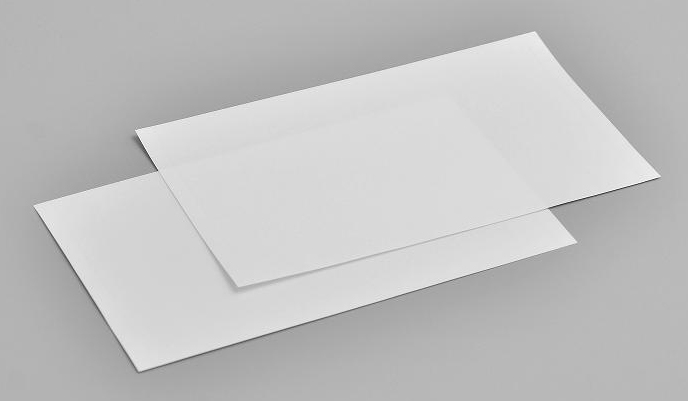
Key features of high-quality PCR/qPCR sealing films
Excellent temperature resistance: can withstand high temperature environments in PCR cycles to ensure experimental stability.
Strong sealing: effectively prevent evaporation and cross-contamination, and protect sample integrity.
High transparency: suitable for qPCR experiments, ensuring accurate detection of fluorescent signals and avoiding data deviation.
Easy to operate: easy to tear and seal, improve experimental efficiency and reduce operating errors.
How to choose a suitable PCR sealing film?
Ordinary PCR experiments: optional heat sealing films or pressure-sensitive sealing films to ensure good sealing.
qPCR experiments: high-transparency optical sealing films are recommended to ensure no attenuation of fluorescent signals and improve data accuracy.
Automated experiments: It is recommended to choose sealing films that are resistant to mechanical operations to avoid damage to the film layer during the operation of the pipetting robot.
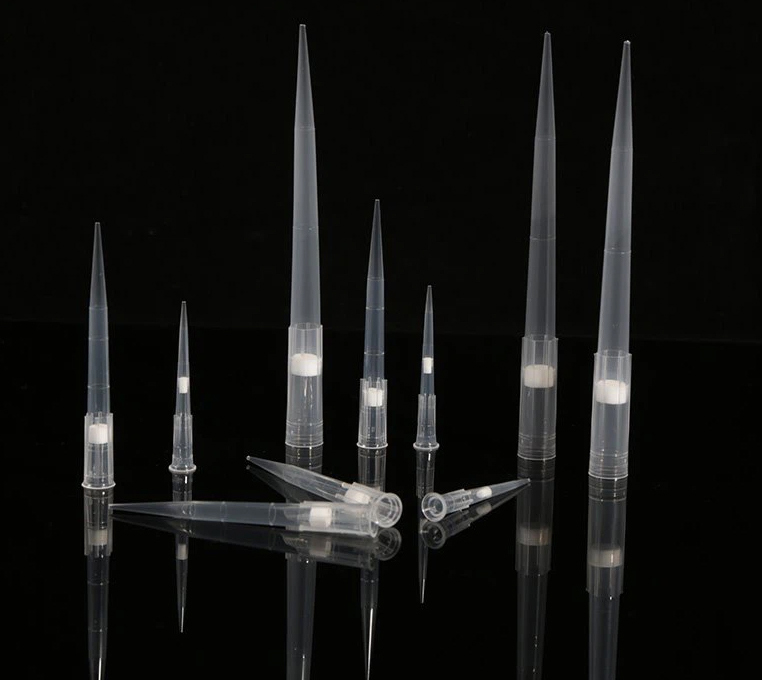
Importance and Selection Guide of Pipette Tips
The selection of pipette tips is crucial to the accuracy and reliability of the experiment. No matter what kind of pipette is used, its performance and accuracy will be affected by the quality and adaptability of the tip. As a complete system, the pipette and the tip must be precisely matched to ensure the accurate transfer and accurate delivery of liquids.
Key features of high-quality pipette tips
Good liquid aspiration performance: ensure that the liquid is accurately aspirated to avoid experimental deviations.
Accurate metering range: perfectly match the pipette to ensure accurate control of the amount of liquid transferred each time.
Low residual volume: reduce the influence of residual liquid and ensure the accuracy of each liquid transfer.
Avoid cross-contamination: use disposable tips to avoid cross-contamination between samples and ensure the purity of experimental data.
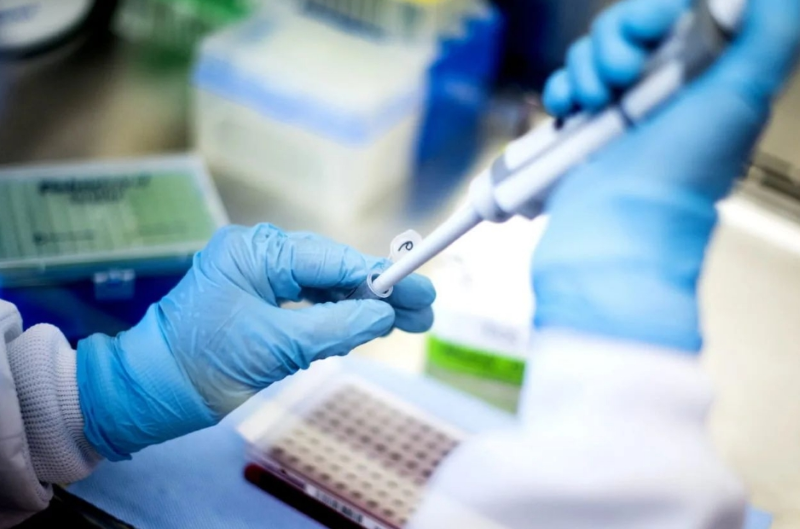
How to choose the right pipette tip?
Adaptability: The pipette tip and the pipette must be precisely matched to ensure stable liquid transfer performance.
Capacity suitable for experimental needs: Choose a pipette tip with a suitable capacity range according to the experimental needs to ensure accurate transfer of the required volume.
High-quality materials: Use non-toxic and non-polluting materials to ensure that there is no external interference in the experiment.
On the basis of mastering the correct pipetting technique, choosing suitable and high-quality pipette tips can greatly improve the precision and accuracy of the experiment. To ensure the reliability and safety of the experimental results, the reuse of pipette tips should be avoided and pipette tips that meet the standards should be selected. To learn more about the types and functions of pipette tips, please refer to https://www.welsotech.com/blog/show-184.html , which can provide more guidance for your experiment.
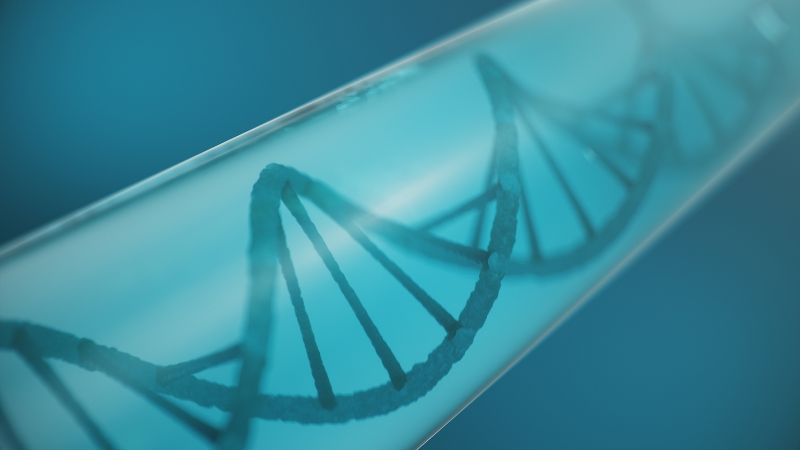
Welso is committed to providing high-quality PCR consumables solutions. We hope that the above content can help your experiment. If you have any other questions or need further information, please feel free to let us know. We will continue to improve and provide you with more valuable information and support.